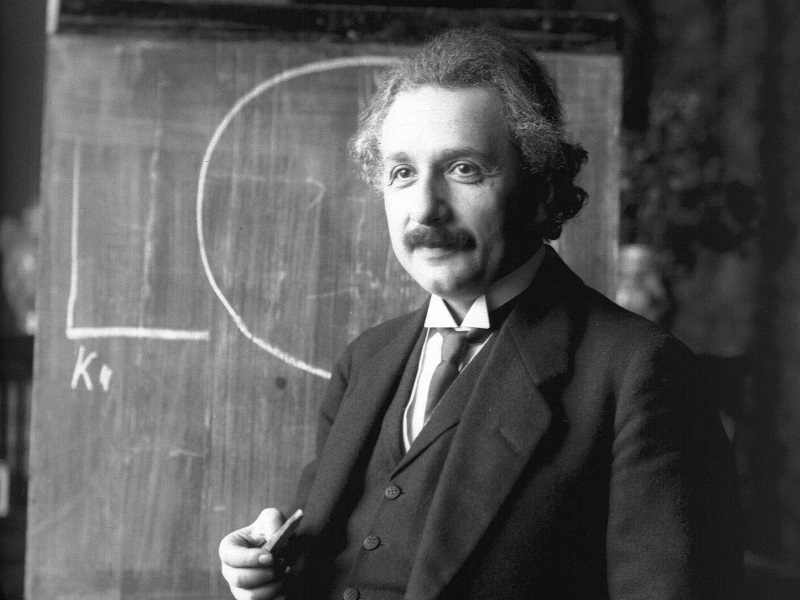- Home
- Science
- Science News
- Einstein's Mass Energy Equation Inadequate, Claims Indian Researcher
Einstein's Mass-Energy Equation Inadequate, Claims Indian Researcher

Einstein considered just two light waves of equal energy emitted in opposite directions with uniform relative velocity, Ajay Sharma, a Shimla-based researcher who challenged Albert Einstein's derivation mass-energy equation, said on Sunday.
The equation was given by Einstein in 1905.
His technical paper "The mathematical derivation or speculation of E=mc^2, in Einstein's September 1905 paper, and some peculiar experiments" was published by Bauman Moscow State Technical University in Moscow last month.
E=mc^2 means energy is equal to mass multiplied by the speed of light squared.
Sharma, an assistant director for education with the Himachal Pradesh government, told IANS that Einstein's theory has not been studied completely.
"It's only valid under special conditions of the parameters involved, e.g. number of light waves, magnitude of light energy, angles at which waves are emitted and relative velocity," he said.
Einstein considered just two light waves of equal energy, emitted in opposite directions and the relative velocity uniform. There are numerous possibilities for the parameters which were not considered in Einstein's 1905 derivation, said Sharma's paper.
This equation expresses the fact that mass and energy are the same physical entity and can be changed into each other, the paper said.
It said E=mc^2 is obtained from Lmc2 by simply replacing L by E (all energy) without derivation by Einstein. "It's illogical," he said.
The paper said Fadner correctly pointed out that Einstein did not mention E in the derivation.
Sharma's book, 'Beyond Einstein and E=mc^2' published by the Cambridge International Science Publishers, says Einstein was not the original propounder of the theory of relativity -- rather he took work from existing literature and published it in 1905 in German journal 'Annalen de Physik'.
"Many people will be surprised that Einstein's work was not peer reviewed before publication. The first postulate of relativity was given by Galileo in 1632 in his book 'Dialogue Concerning the Two Chief World Systems'," the 51-year-old Sharma said.
According to him, Einstein took this opportunity to publish the work of Galileo (1632, Principle of Relativity), Poincare (1898, Constancy of Velocity of Light), Lorentz (1892, Variation of Mass etc), Larmer (1897, Time Dilation), and Fitzegerald (1889, Length Contraction) in his own name.
Although Einstein's theory is well established, it has to be critically analysed and the new results would definitely emerge, a beaming Sharma added.
Catch the latest from the Consumer Electronics Show on Gadgets 360, at our CES 2026 hub.
- Samsung Galaxy Unpacked 2025
- ChatGPT
- Redmi Note 14 Pro+
- iPhone 16
- Apple Vision Pro
- Oneplus 12
- OnePlus Nord CE 3 Lite 5G
- iPhone 13
- Xiaomi 14 Pro
- Oppo Find N3
- Tecno Spark Go (2023)
- Realme V30
- Best Phones Under 25000
- Samsung Galaxy S24 Series
- Cryptocurrency
- iQoo 12
- Samsung Galaxy S24 Ultra
- Giottus
- Samsung Galaxy Z Flip 5
- Apple 'Scary Fast'
- Housefull 5
- GoPro Hero 12 Black Review
- Invincible Season 2
- JioGlass
- HD Ready TV
- Laptop Under 50000
- Smartwatch Under 10000
- Latest Mobile Phones
- Compare Phones
- OPPO Reno 15 Pro Max
- Honor Win RT
- Honor Win
- Xiaomi 17 Ultra Leica Edition
- Xiaomi 17 Ultra
- Huawei Nova 15
- Huawei Nova 15 Pro
- Huawei Nova 15 Ultra
- Asus ProArt P16
- MacBook Pro 14-inch (M5, 2025)
- OPPO Pad Air 5
- Huawei MatePad 11.5 (2026)
- Xiaomi Watch 5
- Huawei Watch 10th Anniversary Edition
- Acerpure Nitro Z Series 100-inch QLED TV
- Samsung 43 Inch LED Ultra HD (4K) Smart TV (UA43UE81AFULXL)
- Asus ROG Ally
- Nintendo Switch Lite
- Haier 1.6 Ton 5 Star Inverter Split AC (HSU19G-MZAID5BN-INV)
- Haier 1.6 Ton 5 Star Inverter Split AC (HSU19G-MZAIM5BN-INV)












